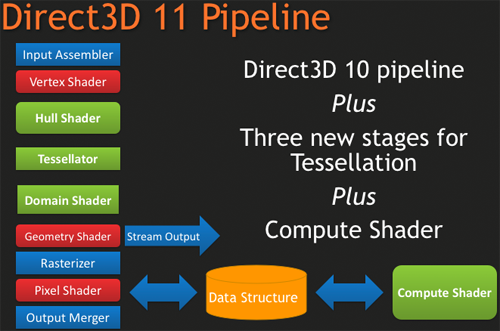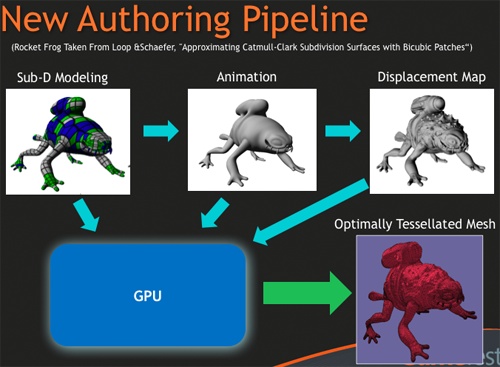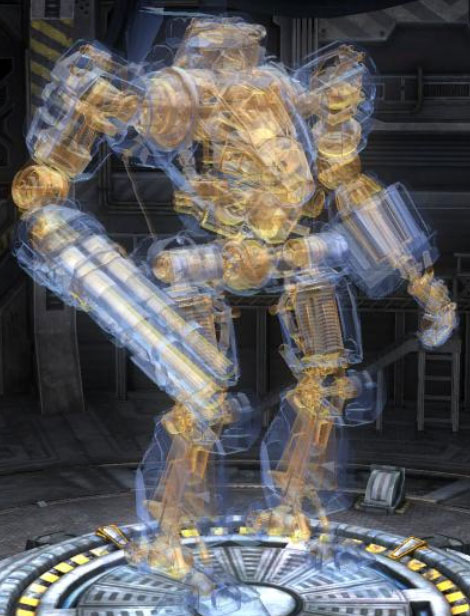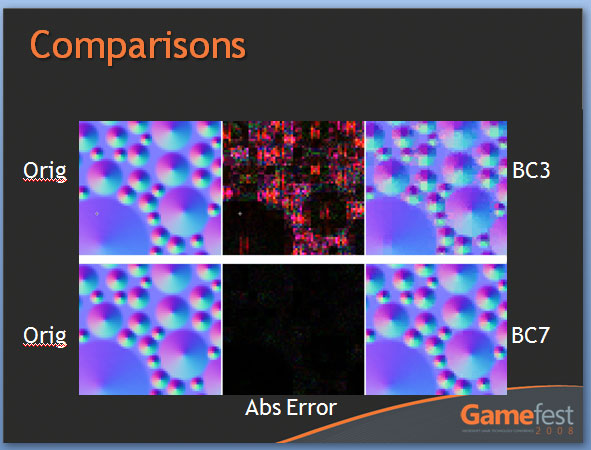AMD's Radeon HD 5870: Bringing About the Next Generation Of GPUs
by Ryan Smith on September 23, 2009 9:00 AM EST- Posted in
- GPUs
DirectX11 Redux
With the launch of the 5800 series, AMD is quite proud of the position they’re in. They have a DX11 card launching a month before DX11 is dropped on to consumers in the form of Win7, and the slower timing of NVIDIA means that AMD has had silicon ready far sooner. This puts AMD in the position of Cypress being the de facto hardware implementation of DX11, a situation that is helpful for the company in the long term as game development will need to begin on solely their hardware (and programmed against AMD’s advantages and quirks) until such a time that NVIDIA’s hardware is ready. This is not a position that AMD has enjoyed since 2002 with the Radeon 9700 and DirectX 9.0, as DirectX 10 was anchored by NVIDIA due in large part to AMD’s late hardware.
As we have already covered DirectX 11 in-depth with our first look at the standard nearly a year ago, this is going to be a recap of what DX11 is bringing to the table. If you’d like to get the entire inside story, please see our in-depth DirectX 11 article.
DirectX 11, as we have previously mentioned, is a pure superset of DirectX 10. Rather than being the massive overhaul of DirectX that DX10 was compared to DX9, DX11 builds off of DX10 without throwing away the old ways. The result of this is easy to see in the hardware of the 5870, where as features were added to the Direct3D pipeline, they were added to the RV770 pipeline in its transformation into Cypress.

New to the Direct3D pipeline for DirectX 11 is the tessellation system, which is divided up into 3 parts, and the Computer Shader. Starting at the very top of the tessellation stack, we have the Hull Shader. The Hull Shader is responsible for taking in patches and control points (tessellation directions), to prepare a piece of geometry to be tessellated.
Next up is the tesselator proper, which is a rather significant piece of fixed function hardware. The tesselator’s sole job is to take geometry and to break it up into more complex portions, in effect creating additional geometric detail from where there was none. As setting up geometry at the start of the graphics pipeline is comparatively expensive, this is a very cool hack to get more geometric detail out of an object without the need to fully deal with what amounts to “eye candy” polygons.
As the tesselator is not programmable, it simply tessellates whatever it is fed. This is what makes the Hull Shader so important, as it’s serves as the programmable input side of the tesselator.
Once the tesselator is done, it hands its work off to the Domain Shader, along with the Hull Shader handing off its original inputs to the Domain Shader too. The Domain Shader is responsible for any further manipulations of the tessellated data that need to be made such as applying displacement maps, before passing it along to other parts of the GPU.

The tesselator is very much AMD’s baby in DX11. They’ve been playing with tesselators as early as 2001, only for them to never gain traction on the PC. The tesselator has seen use in the Xbox 360 where the AMD-designed Xenos GPU has one (albeit much simpler than DX11’s), but when that same tesselator was brought over and put in the R600 and successive hardware, it was never used since it was not a part of the DirectX standard. Now that tessellation is finally part of that standard, we should expect to see it picked up and used by a large number of developers. For AMD, it’s vindication for all the work they’ve put into tessellation over the years.
The other big addition to the Direct3D pipeline is the Compute Shader, which allows for programs to access the hardware of a GPU and treat it like a regular data processor rather than a graphical rendering processor. The Compute Shader is open for use by games and non-games alike, although when it’s used outside of the Direct3D pipeline it’s usually referred to as DirectCompute rather than the Compute Shader.
For its use in games, the big thing AMD is pushing right now is Order Independent Transparency, which uses the Compute Shader to sort transparent textures in a single pass so that they are rendered in the correct order. This isn’t something that was previously impossible using other methods (e.g. pixel shaders), but using the Compute Shader is much faster.

Other features finding their way into Direct3D include some significant changes for textures, in the name of improving image quality. Texture sizes are being bumped up to 16K x 16K (that’s a 256MP texture) which for all practical purposes means that textures can be of an unlimited size given that you’ll run out of video memory before being able to utilize such a large texture.
The other change to textures is the addition of two new texture compression schemes, BC6H and BC7. These new texture compression schemes are another one of AMD’s pet projects, as they are the ones to develop them and push for their inclusion in DX11. BC6H is the first texture compression method dedicated for use in compressing HDR textures, which previously compressed very poorly using even less-lossy schemes like BC3/DXT5. It can compress textures at a lossy 6:1 ratio. Meanwhile BC7 is for use with regular textures, and is billed as a replacement for BC3/DXT5. It has the same 3:1 compression ratio for RGB textures.
We’re actually rather excited about these new texture compression schemes, as better ways to compress textures directly leads to better texture quality. Compressing HDR textures allows for larger/better textures due to the space saved, and using BC7 in place of BC3 is an outright quality improvement in the same amount of space, given an appropriate texture. Better compression and tessellation stand to be the biggest benefactors towards improving the base image quality of games by leading to better textures and better geometry.
We had been hoping to supply some examples of these new texture compression methods in action with real textures, but we have not been able to secure the necessary samples in time. In the meantime we have Microsoft’s examples from GameFest 2008, which drive the point home well enough in spite of being synthetic.

Moving beyond the Direct3D pipeline, the next big feature coming in DirectX 11 is better support for multithreading. By allowing multiple threads to simultaneously create resources, manage states, and issue draw commands, it will no longer be necessary to have a single thread do all of this heavy lifting. As this is an optimization focused on better utilizing the CPU, it stands that graphics performance in GPU-limited situations stands to gain little. Rather this is going to help the CPU in CPU-limited situations better utilize the graphics hardware. Technically this feature does not require DX11 hardware support (it’s a high-level construct available for use with DX10/10.1 cards too) but it’s still a significant technology being introduced with DX11.
Last but not least, DX11 is bringing with it High Level Shader Language 5.0, which in turn is bringing several new instructions that are primarily focused on speeding up common tasks, and some new features that make it more C-like. Classes and interfaces will make an appearance here, which will make shader code development easier by allowing for easier segmentation of code. This will go hand-in-hand with dynamic shader linkage, which helps to clean up code by only linking in shader code suitable for the target device, taking the management of that task out of the hands of the coder.










327 Comments
View All Comments
Ryan Smith - Wednesday, September 23, 2009 - link
The load temp is the same as a single card.ilnot1 - Wednesday, September 23, 2009 - link
Does anyone have a link to any review that compares 4850's, 4870's, and 4890's in Crossfire against the 5870 & 5870 CF setup?T2k - Wednesday, September 23, 2009 - link
FWIW: http://www.techpowerup.com/reviews/AMD/HD_5870_PCI...">http://www.techpowerup.com/reviews/AMD/HD_5870_PCI...T2k - Wednesday, September 23, 2009 - link
Ehh, I meant: http://www.techpowerup.com/reviews/ATI/Radeon_HD_5...">http://www.techpowerup.com/reviews/ATI/Radeon_HD_5...ilnot1 - Wednesday, September 23, 2009 - link
Thanks T2k, but the only cards that are in Crossfire in that review are the 58XX's. There are no other comparisons to cards in CF or SLI. Since Ryan included some of the most recent nVida cards in SLI I was hoping to find the 48XX's in CF.T2k - Thursday, September 24, 2009 - link
Basically the rule of thumb seems to be that at 1920x1200 a single 5870 is still slightly slower than 4870X2 and probably slightly faster than a 4850X2 2GB.I own the latter so I will wait this time - either they lower the initial price of the 5870X2 or they release a 5850X2, otherwise I'll pass because single 5870 is simply OVERPRICED as it is already.
T2k - Wednesday, September 23, 2009 - link
Seriously: we get a very nice technical background section - then you top it with this more than idiotic collection of games for testing, leaving out 4850X2 2GB, 5850, using TWO stupid CryEngine-based PoS from Crytek, the most un-optimized code producers or WoW, of which even you admit it's CPU-bounded but now CoD:WaW, no Clear Sky, no UT3 or rather a single current Unreal Eninge-based game?Benchmarking part is ALMOST WORTHLESS, the only useful info is that unless you go above 1920x1200 the 4870X2 pretty much owns 5870's @ss as of now.
Ryan Smith - Wednesday, September 23, 2009 - link
For what it's worth, Batman: Arkham Asylum is UE3 engine based.T2k - Wednesday, September 23, 2009 - link
OK, I missed that (probably because I found the game shots ugly and became uninterested.)But how about ET:QW? Yes, it's not the best looking game but it is still popular, let alone World at War which is both great looking and crazy popular, let alone Clear Sky which is a very demanding DX10.1 game? Where is Fallout 3? Where is Modern Warfare?
FFS the most demanding are the quick ation-shooters and we, FPS players are the first one to upgrade to new cards...
Werelds - Thursday, September 24, 2009 - link
How would ET:QW be a good benchmark? Last I checked, it's still limited to the 30 FPS animations, which makes running it at more than 30 FPS pointless because everything will look jerky.I agree something like the CoD games should be included for comparison's sake, but they're hardly a good benchmark or taxing on a system. QW does not fall into the same category though, it has a smaller active playerbase than even L4D which lost a lot of players due to the lack of updates.